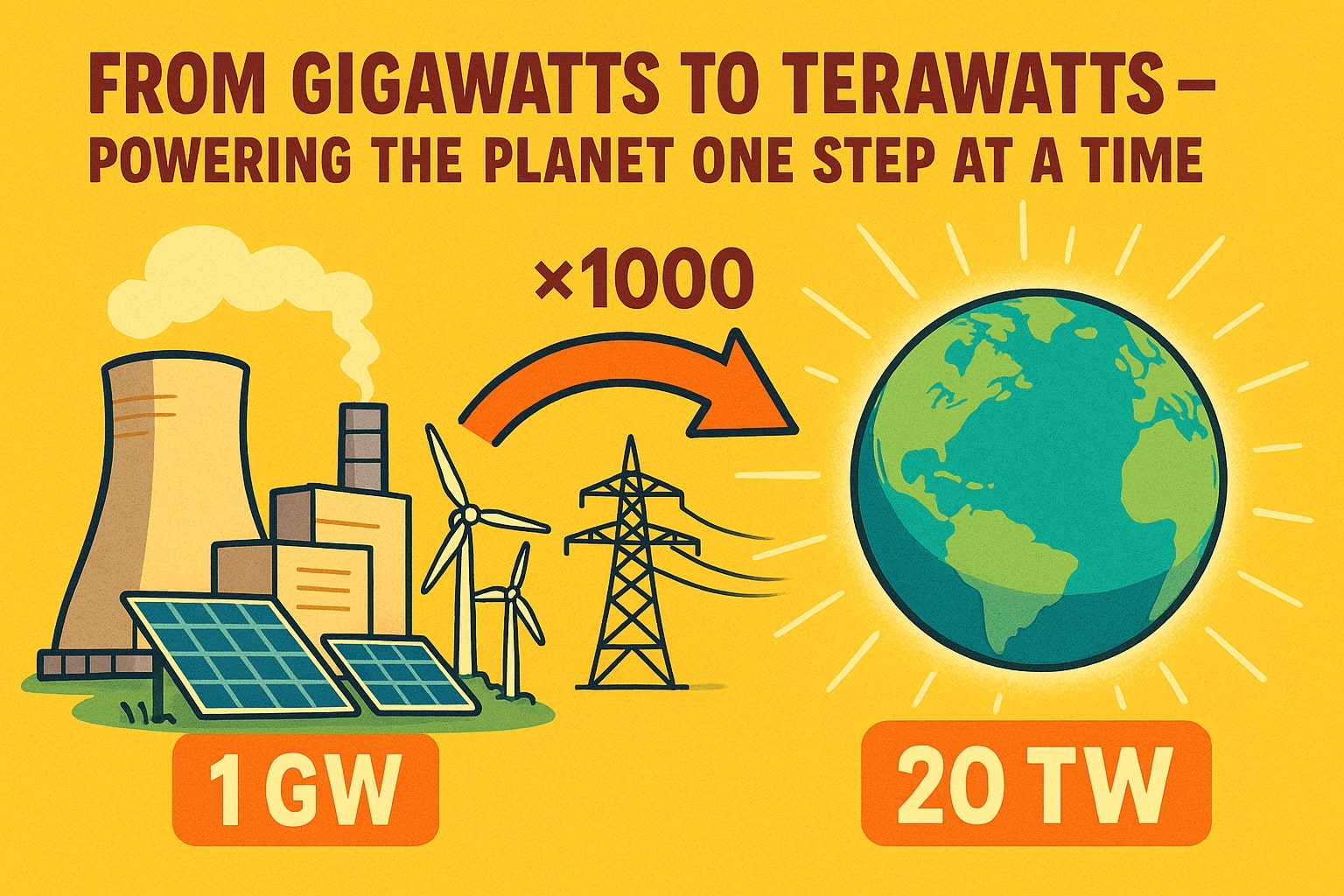Gigawatt to Terawatt – How to convert GW to TW
Need to convert gigawatt to terawatt? These two power units sit near the top of the energy scale. Gigawatts describe the capacity of large power plants or regional electricity grids, while terawatts represent the combined energy output of countries — or the entire planet. They’re separated by a factor of 1,000, but thanks to the metric system, converting between them is straightforward. Let’s break down the math, explore where each unit is used, and understand why the terawatt has become the language of global energy.

What is a gigawatt (GW)?
A gigawatt equals 1 billion watts (1 × 10⁹ W) or 1,000 megawatts (MW). It’s used for large-scale electricity production, such as the output of massive power plants, offshore wind farms, or city-wide energy networks.
For example, a large nuclear plant typically generates around 1–2 GW, while major offshore wind farms can exceed 3 GW as they expand to serve regional grids. Gigawatts are also a common unit for comparing national energy capacities.
What is a terawatt (TW)?
A terawatt is a huge power unit, equal to 1 trillion watts (1 × 10¹² W) or 1,000 gigawatts (GW). It’s the standard for discussing global electricity production, worldwide energy demand, or ambitious renewable energy targets.
The planet’s average power demand is currently around 18–20 TW, according to the International Energy Agency (IEA), and this figure continues to grow as more regions electrify and industrialize.
How to convert gigawatt to terawatt
The conversion factor is simple:
1 terawatt = 1,000 gigawatts (1 TW = 10³ GW)
To convert:
Terawatts (TW) = Gigawatts (GW) ÷ 1,000
Example: If a continent’s energy grid generates 5,400 GW:
5,400 ÷ 1,000 = 5.4 TW
Need a quick calculation? Use our Power Converter or explore other Conversion tools for instant results.
Did you know?
-
World energy scale: The total global electricity generation capacity now exceeds 8 TW, meaning the world can produce over 8,000 GW at peak output.
-
Solar growth: By 2030, global solar capacity is projected to surpass 4 TW, according to the International Renewable Energy Agency (IRENA), driven by rapid installations across Asia and Europe.
-
Hydroelectric giants: The Three Gorges Dam in China has a generating capacity of 22.5 GW, which is just 0.0225 TW — a reminder of the scale difference between these units.
-
Natural forces: The Earth receives about 173,000 TW of solar energy at the top of the atmosphere each day — far more than humanity currently uses, though most of it is not harvested.
How Terawatts Took Over the Global Energy Conversation
As renewable energy deployment accelerated in the 21st century, global targets quickly outgrew gigawatt figures. According to Bloomberg New Energy Finance, policymakers began using terawatts to describe capacity and demand as the combined total of wind, solar, and hydropower surpassed the multi-gigawatt scale.
For example, in 2022, the International Renewable Energy Agency (IRENA) reported that the world had crossed 3 TW of installed renewable energy capacity. Using terawatts made it easier for leaders and investors to grasp the scope without sifting through thousands of gigawatt figures.

From Regional Power to the Global Scale
Converting gigawatt to terawatt is as simple as dividing by 1,000, but the meaning behind the numbers matters. Gigawatts are perfect for describing a single country’s generation or a massive energy project, while terawatts capture the full picture of humanity’s power production and consumption.
For fast, precise calculations, use our Power Converter or check other Conversion tools to simplify every power-related conversion.

